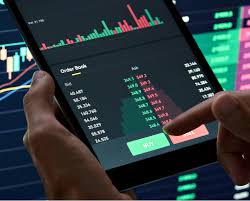
Understanding Crypto Trading Liquidity Data
In the fast-paced world of cryptocurrency trading, liquidity is a vital concept that every trader should comprehend. Liquidity refers to the ease with which an asset can be bought or sold without causing significant price fluctuations. High liquidity typically indicates that an asset can be traded quickly with minimal price impact, whereas low liquidity can lead to increased volatility and slippage. This article delves into the importance of Crypto Trading Liquidity Data https://del.gr/component/k2/item/10-vestibulum-ante-ipsum-primis-in-faucibus/10-vestibulum-ante-ipsum-primis-in-faucibus?start=3090 and how traders can effectively use liquidity data to enhance their trading strategies.
The Importance of Liquidity in Crypto Trading
Liquidity is crucial for traders because it directly impacts the execution and profitability of trades. Think of it this way: if you want to sell a large amount of an illiquid asset, you may end up having to lower your asking price significantly to find a buyer. Conversely, in a liquid market, you can execute your trades swiftly while maintaining a fair market price.
Several key factors underscore why liquidity matters in crypto trading:

- Price Stability: Higher liquidity typically leads to more stable prices, reducing the risk of dramatic price swings that can impact trading strategies.
- Market Efficiency: A liquid market fosters more accurate price discovery, ensuring that the prices of assets reflect their actual value based on supply and demand.
- Lower Transaction Costs: With greater liquidity, traders often encounter tighter bid-ask spreads, resulting in lower transaction costs when entering or exiting positions.
Measuring Liquidity: Key Metrics
Traders utilize several metrics to gauge liquidity in the crypto markets. Understanding these metrics enables traders to make informed decisions:
- Trading Volume: This is perhaps the most straightforward indicator of liquidity. High trading volume suggests that a significant number of assets are being exchanged, indicating higher liquidity.
- Bid-Ask Spread: The difference between the highest price a buyer is willing to pay (bid) and the lowest price a seller will accept (ask). A narrower spread typically signifies better liquidity.
- Order Book Depth: A deeper order book, showing a higher number of buy and sell orders at various price levels, indicates a more liquid market.
- Slippage: This refers to the difference between the expected price of a trade and the actual price at which it executes. Low slippage indicates better liquidity.
How Traders Can Use Liquidity Data
Knowing how to interpret and utilize liquidity data can be a game changer for traders. Here are several strategies to leverage liquidity:

- Optimal Entry and Exit Points: By analyzing liquidity metrics, traders can identify the best price levels for entering or exiting positions. High liquidity points can also act as support or resistance levels.
- Timing Trades: Understanding when markets are most liquid can help traders time their trades to minimize slippage and transaction costs.
- Market Sentiment Analysis: Changes in liquidity can indicate shifts in market sentiment. For instance, a sudden drop in liquidity might signal bearish sentiment, while increased liquidity may indicate bullish trends.
Challenges of Liquidity in Crypto Markets
Despite its importance, liquidity in cryptocurrency markets can be inconsistent. Several challenges affect liquidity:
- Market Manipulation: Due to the relatively small market capitalization of some cryptocurrencies, they can be susceptible to manipulation, which can artificially affect liquidity.
- Exchange Issues: Different exchanges have varying liquidity levels. Traders may find that certain cryptocurrencies are more liquid on some exchanges compared to others.
Conclusion
In conclusion, crypto trading liquidity data is integral to understanding market dynamics. By familiarizing themselves with liquidity metrics and effectively analyzing them, traders can enhance their strategies, reduce transaction costs, and improve market timing. As the cryptocurrency landscape continues to evolve, staying informed about liquidity and its implications will be crucial for both novice and experienced traders alike.





發表迴響
抱歉,你必須要登入才能發表迴響喔!